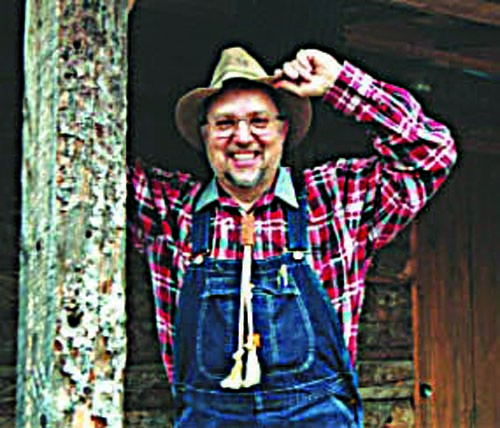Chickens are interesting and smarter than most folks think. For instance, most of the hens in my flock keep an eye on me all the time I’m within their sight, because they associate me with being a food provider.
They run pell-mell to the compost pile when I dump a new supply of table scraps, garden refuse, or the skeletal remains of filleted fish. They also come running when they see the tractor operating. If I’m tilling gardens or food plots, they stay right behind the tiller to peck up any worms or insects that I uncover. If I’m turning the compost pile, they stand at the ready to peck up any June bug grubs or run down and devour any escaping mice.
If I’m picking tomatoes, they’re at my feet waiting for a rotting tomato or a juicy tomato worm. In short, chickens are watchful opportunists.
***
Another thing hens love to do is hide their eggs. Flock owners are always on the lookout for hidden egg nests. I’ve found hidden eggs on top of big round bales, between barrels, inside buckets, and hidden in a tuft of dead grass. Usually, hens are content to lay eggs in their nest boxes in the hen house, but not always.
My good friend and neighbor, ol’ Hyden Seak, recently made perhaps the biggest “egg find” in history. He keeps his hen flock in an old small barn that used to have a hay manger in it. However, at some point in time, someone put a false bottom in the manger.
Recently, Hyden decided that his hen house needed a thorough cleaning and revamping. Part of the cleanup involved cleaning out the manager. That’s when he discovered the false floor in the manger. And, when he lifted out the false floor, voila, underneath he discovered why he’d been gathering fewer eggs than usual for a few weeks.
Yep, somehow his hens had found a way into the hidden compartment under the manger and started laying eggs. What Hyden discovered wuz “wall to wall” eggs. When he quit counting them, he had 68 eggs in his egg basket — that’s just a shade under six dozen.
He wuz sure a lot of the eggs were rotten, so he took the whole batch to a nearby creek on his property and tossed in the eggs knowing that the rotten ones will float to the top. Only 10 of the eggs floated and were rotten. The rest would have been edible, but Hyden sez he’s glad he didn’t break them open to find out.
***
While I’m on the subject of my chicken flock, I’ll report that I live-trapped three chicken-killing possums this week. I lured them to their ultimate demise with, guess what? — roasted turkey wing tips from our Thanksgiving dinner.
I caught them right outside my hen house, so I know they were on the prowl for a chicken dinner when they got caught.
***
The Old Geezer Breakfast Club is going full-bore once again. I happily rejoined the “happy cookers” after I got my third Moderna covid shot (the booster). I figgered there wuzn’t anything more I could do to protect myself, so I might as well enjoy the weekly gossip at breakfast.
Last week, we fed 17 old-timers. The week before — 18. There’s still Covid in the county, so I hope we all stay safe.
***
There ain’t no reason I can think of that my column can’t be informative at times. So, since electric vehicles and storage batteries are now in vogue, I’m gonna report on some information I recently read about the electrical battery required to run one electric vehicle (EV): According to the info I saw, not verified by any expert that I know of, the battery is about the size of a travel suitcase and weighs somewhere around 1,000 pounds. It contains 25 pounds of lithium, 60 pounds of nickel, 44 pounds of manganese, 30 pounds cobalt, 200 pounds of copper, and 400 pounds of aluminum, steel, plastic, and graphite. Inside it has 6,831 individual lithium-ion cells.
To manufacture each auto battery, the process uses 25,000 pounds of brine for the lithium, 30,000 pounds of ore for the cobalt, 5,000 pounds of ore for the nickel, and 25,000 pounds of ore for copper. If the info is correct, 500,000 pounds of the earth’s crust is dug up and processed for a single electric vehicle battery.
To make solar panel arrays to convert sunlight into electricity, requires chemicals to process silicate into the silicon used in the panels, specifically, hydrochloric acid, sulfuric acid, nitric acid, hydrogen fluoride, trichloroethane, and acetone. In addition, the panels require gallium, arsenide, copper-indium-gallium- diselenide, and cadmium-telluride. Silicon dust is a reported hazard to workers, and the panels are not easily, or cheaply, recycled.
Common electricity-generating windmills each weigh 1,688 tons and contain 1,300 tons of concrete, 295 tons of steel, 48 tons of iron, 24 tons of fiberglass, and the rare earths neodymium, praseodymium, and dysprosium. Each blade weighs 81,000 pounds and will last 15 to 20 years, at which time it must be replaced.
And, finally, if “dead vehicle” batteries are discarded in landfills, they reportedly continue to leak electricity and eventually break open in the soil.
***
Words of wisdom for the week: It’s not a good thing when the check engine light in your gasoline-fueled vehicle burns out. Have a good ‘un.





